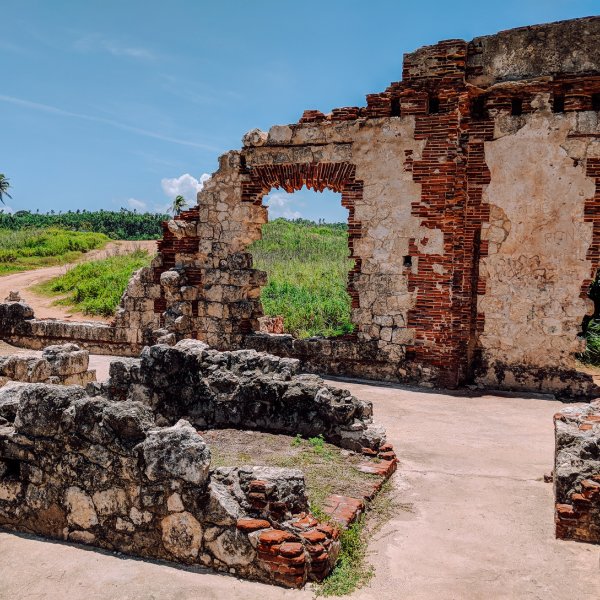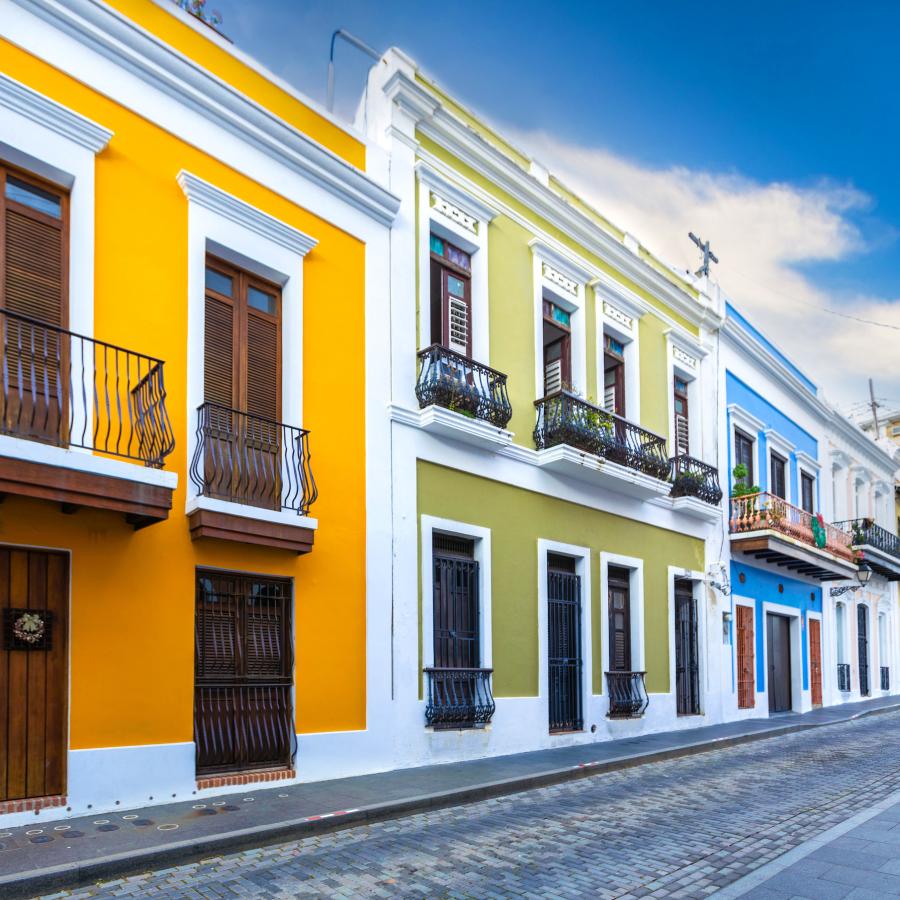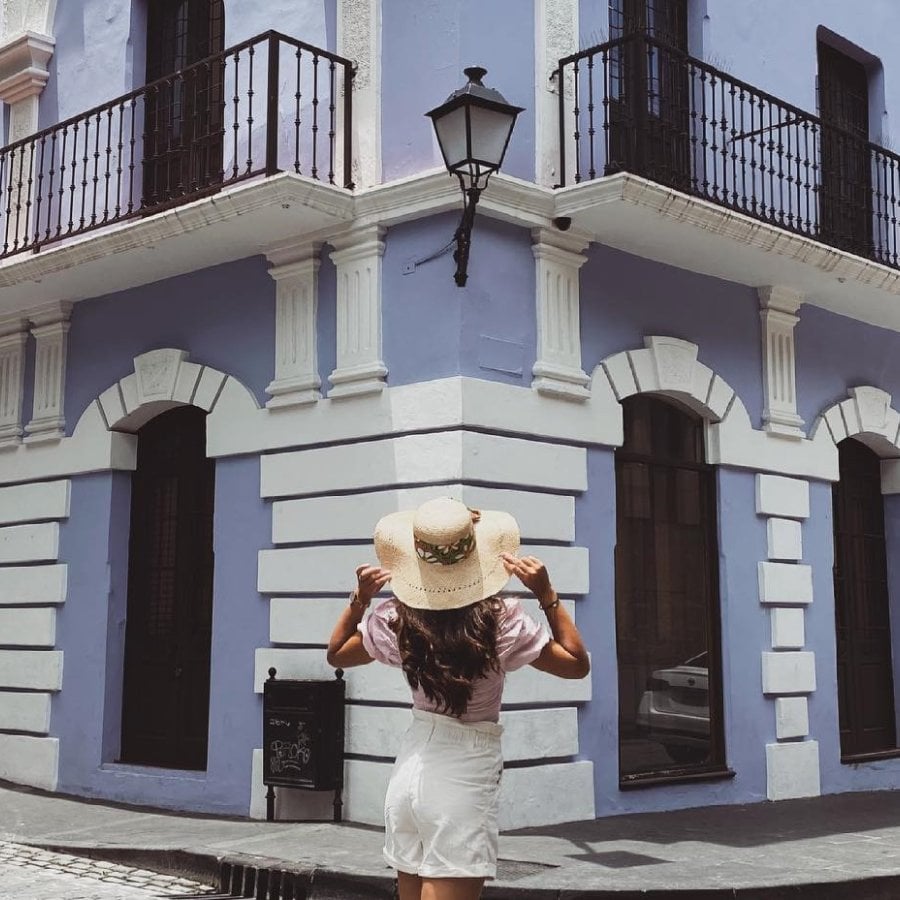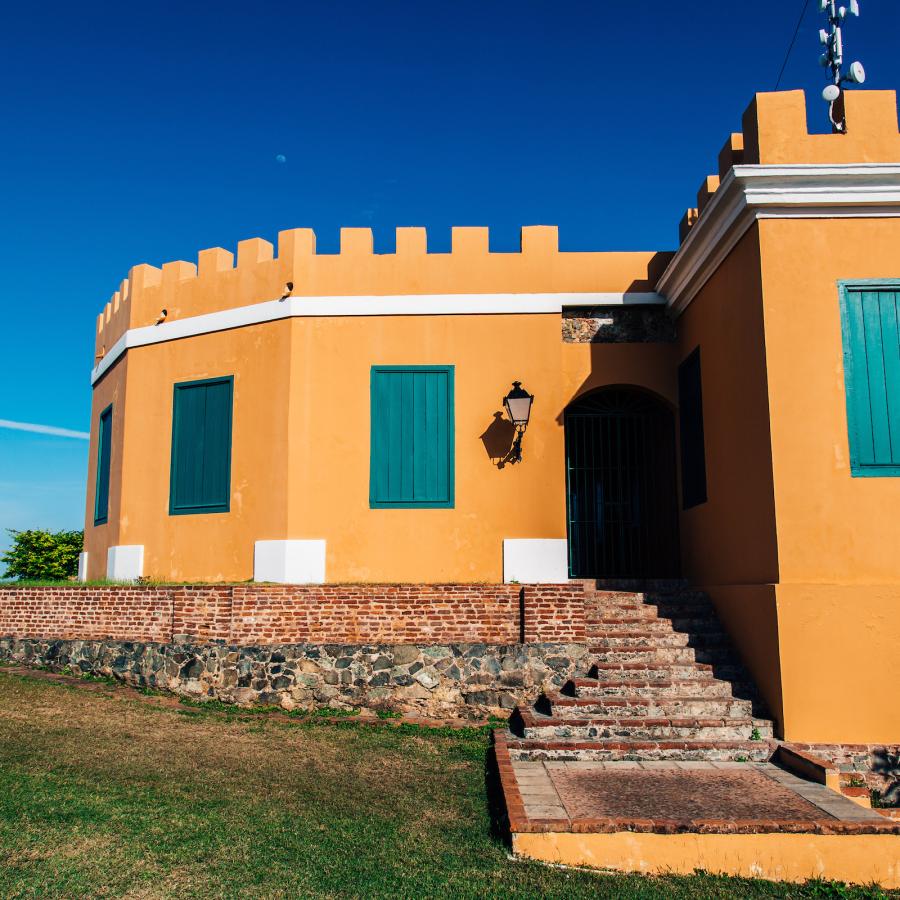You’ll discover endless days of sunshine wrapped in inclusive adventures. Here’s a roundup of some of the top accessible attractions in Puerto Rico.
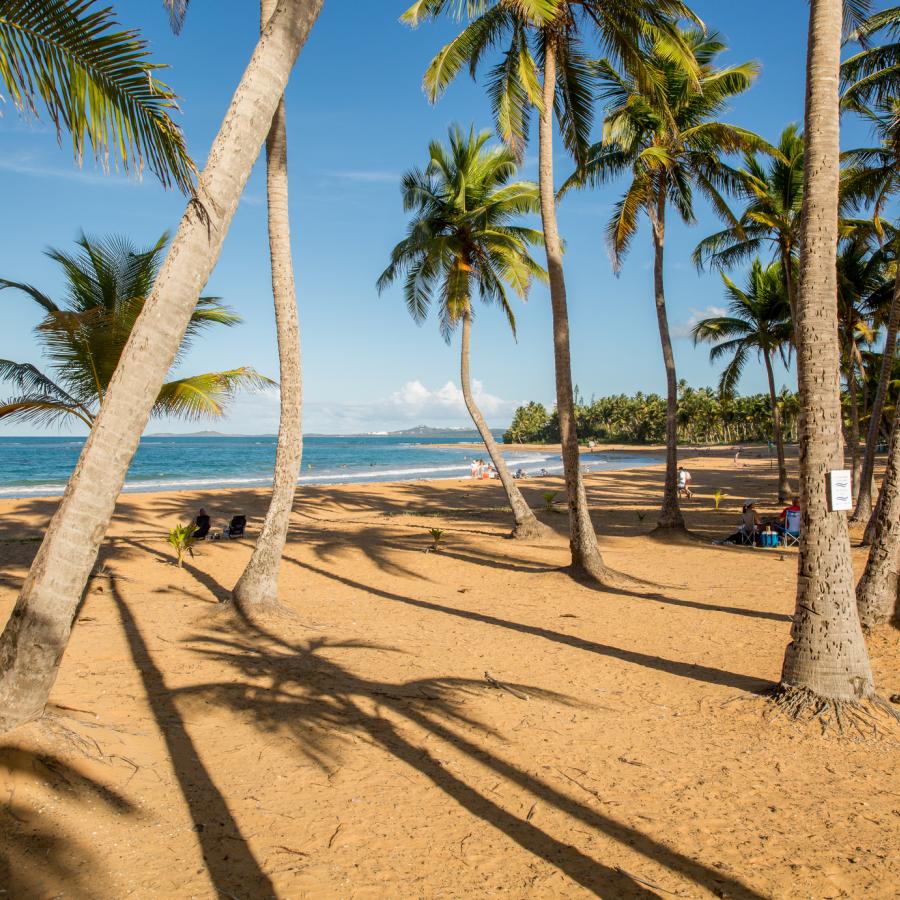
Luquillo’s al-fresco appeal extends beyond its powdery golden sand and azure ocean waves.
Playa Luquillo
Just a half-hour drive from San Juan Luis Munoz Marin International Airport is Luquillo Beach, where soft golden sand and gentle waves greet travelers. This coastal haven appeals to foodies, too, since an excellent selection of delicious options awaits in a row of popular nearby kiosks.
Close to the beach’s entrance are 50 parking spaces reserved for visitors with disabled parking permits, where the pavement is smooth. A short distance away is an open-air building navigable by ramp. Here, you’ll find accessible restrooms, a changing area with lifts, a stall with a transfer seat, and a changing bed. There’s also a nearby kiosk where accessible flotation devices, amphibious beach chairs, and wheelchairs for use on sand are available to rent.

Iglesia San Francisco was one of the first churches to be built on the Island.
Parroquia San Francisco de Asís
Parroquia San Francisco de Asís, or the Church of Saint Francis of Assisi, is one of Old San Juan’s most interesting religious landmarks. Marvel at centuries-old masonry or take pause at an altar featuring a 1940s mural of Christ and his disciples.
The church is located on the east side of Calle San Francisco Street, where a curb-cut is located. Travelers who use a wheelchair can enter by ramp, but please note that the ramp is steep, and assistance may be necessary.
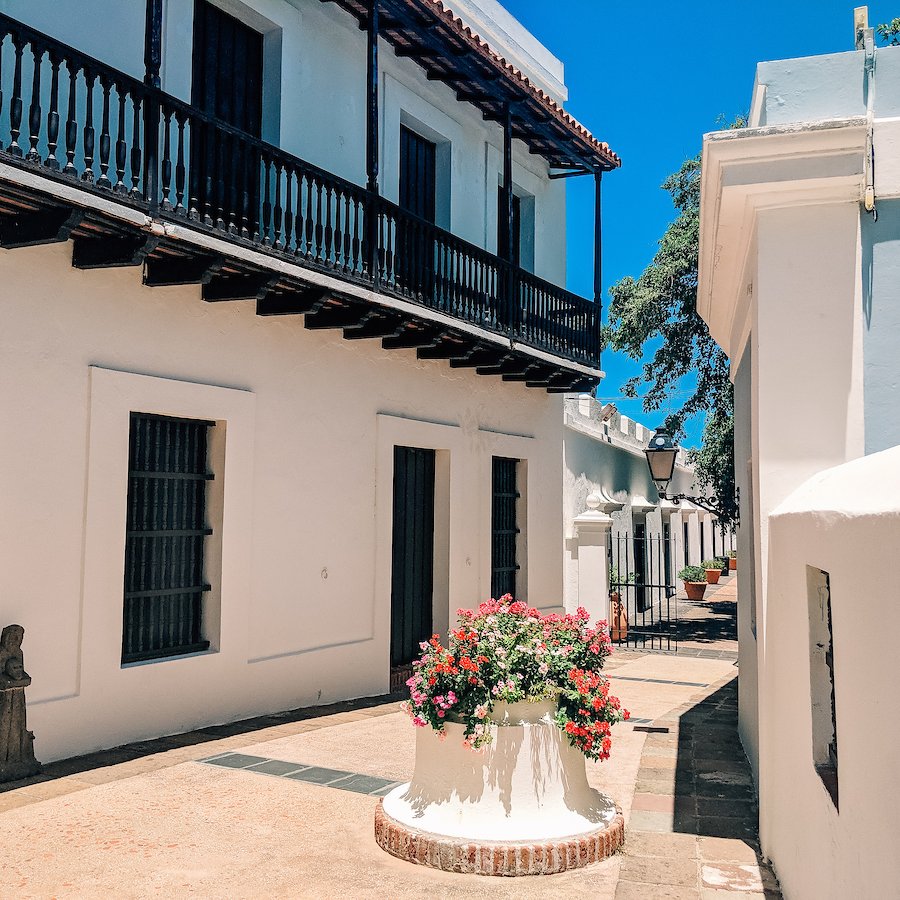
This historic house sits in the colonial district of Old San Juan.
Museo Casa Blanca
Built for the city’s first governor, Old San Juan’s oldest residence sits between lush palms and hibiscus gardens. The neoclassical Caribbean’s back ramada overlooks the Atlantic Ocean, while the entrance showcases a vibrant blue fountain framed by draping Spanish moss.
The museum itself is ADA-compliant, and nearby north-facing sidewalks offer curb cuts. However, certain areas of the museum’s garden are not accessible to those with mobility impairments.

Legend has it that the Chapel of Christ the Savior was erected to honor a miracle.
Capilla del Santo Cristo de la Salud
Built in the mid-1700s, the Chapel of the Holy Christ of Health was erected to honor a healing miracle. Legend has it that this tiny chapel, tucked in a corner of Old San Juan, brings wellness to visitors. The tawny stone chapel is at first unassuming but glimmers when touched by light, thanks to small, silver ornaments that fleck the exterior. Each ornament was left by a visitor in an act of faith and represents a body part in need of healing.
The chapel’s entrance is located at street level and is wide enough for wheelchairs to pass through. Note that the nearest curb cut on the chapel side of the street is one block away, so plan to get on the sidewalk there if needed.

Approaching the historic San Cristobal Fort.
Castillo San Cristóbal
Castillo San Cristóbal is a fortress named after Saint Christopher, the patron saint of travelers, and is the largest European fortification in the Americas. Built to protect the city from attack by land, this 27-acre site is as gorgeous as it is awe-inspiring.
An ADA-compliant elevator in the main entrance provides access to the main plaza and first floor of the fort. The upper levels are accessible via steep ramps, and visitors with mobility challenges should note the site’s terrain is largely cobbled and uneven.
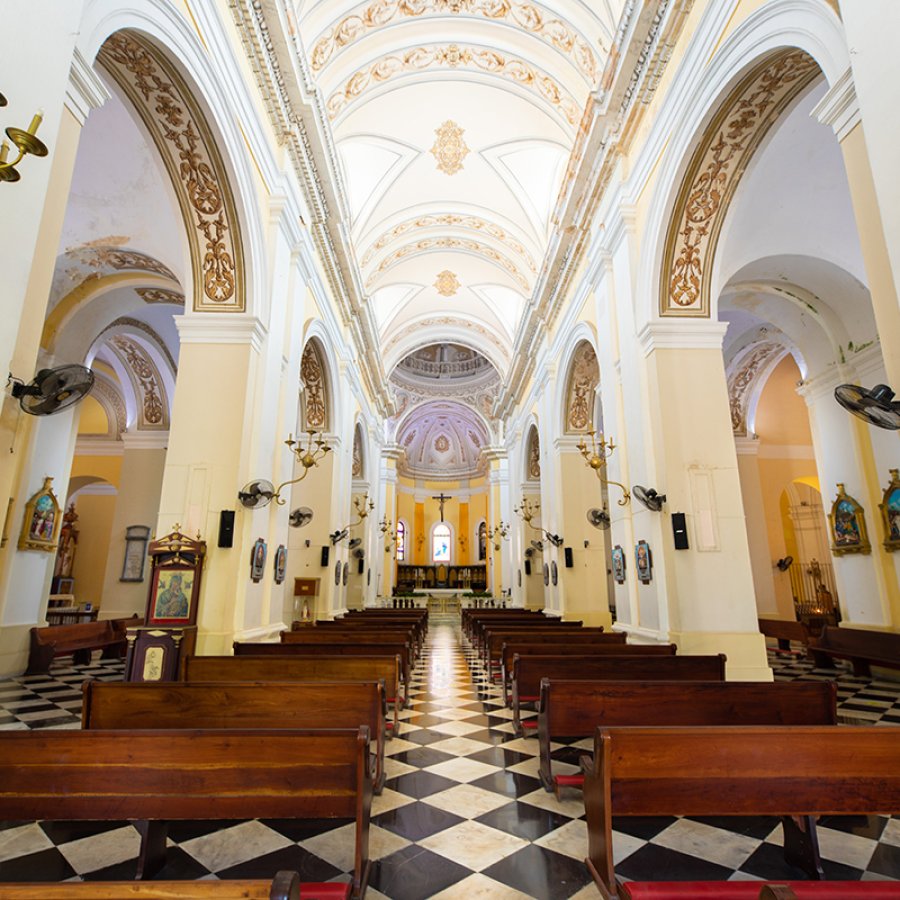
The San Juan Bautista Cathedral is the oldest church on U.S. soil and was built in 1521.
Catedral de San Juan Bautista
This cathedral in Old San Juan is perhaps Puerto Rico’s most marvelous religious building — and certainly one of the most historic. It’s the seat of the Archdiocese of Puerto Rico, the second-oldest church in the Western Hemisphere, and the oldest church on U.S. soil. Though the original 1500s structure was demolished by a hurricane, the current structure dates to 1540. Its ivory exterior, cathedral ceilings, and mesmerizing stained-glass windows draw visitors from across the globe.
The cathedral’s wide, no-step entrance makes it accessible to travelers with wheelchairs, but note that nearby sidewalks are rutted and high. Consider entering on the street side insteadbut be cautious of traffic.
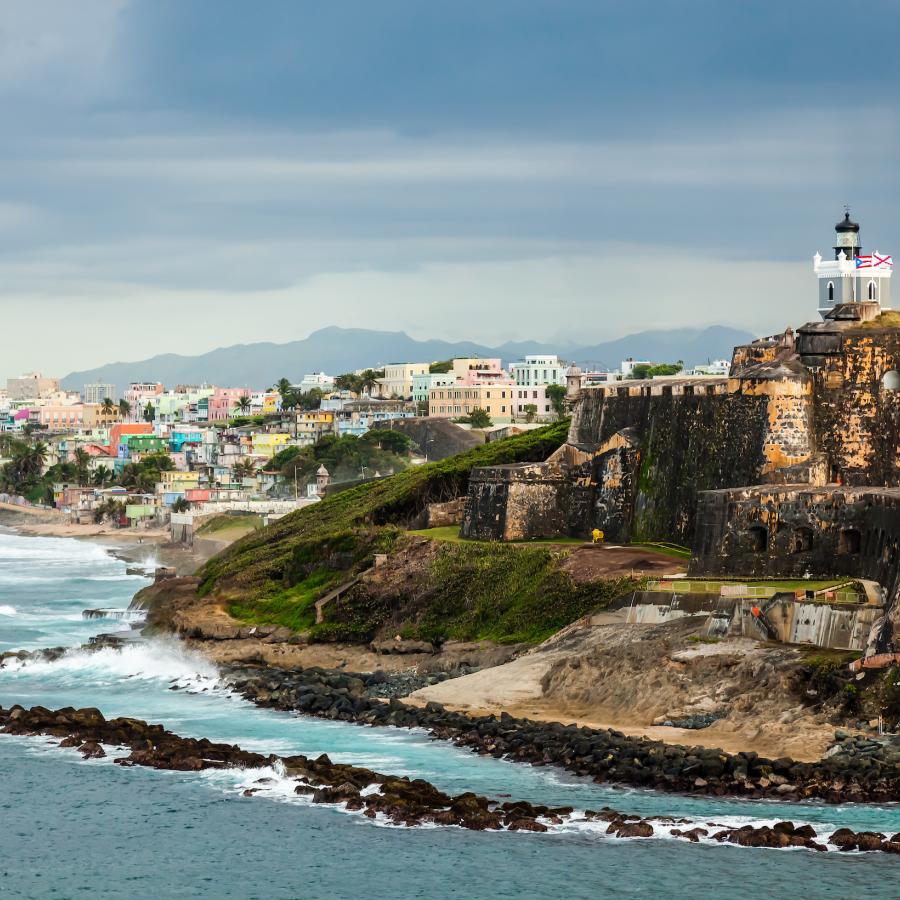
The so-called "walled city" of Old San Juan holds over 500 years of history.
Castillo San Felipe del Morro
At the top of Old San Juan sits this striking citadel. Often called El Morro, the fortification represents Puerto Rico’s complex colonial legacy. The six-level bastion has seen countless battles and World Wars and is now part of the U.S. National Park Service. It also houses the Island’s oldest lighthouse.
Visitors should note that there is no parking at the entrance of El Morro but that the sidewalk leading to it has good curb mobility. The main plaza, which is considered the fifth floor, has accessible exhibit areas, a bookstore, and a theater. Lower levels of the fort are inaccessible to visitors with mobility impairments, but the upper sixth floor can be reached via steep ramps.
Explore Accessible Hotels Nearby
Comment Guidelines
We value your thoughts and want to foster a respectful and engaged community. As such, we ask that you adhere to the following guidelines when posting comments
- Please ensure your opinions are expressed respectfully.
- We won’t remove comments that engage in courteous debate but hate speech or any form of profanity will not be tolerated. This also applies to the inappropriate use of emojis or hashtags.
- Do not downvote or dislike a comment simply because you disagree with another person’s views.
- Self-promotion and external links are not allowed and will be removed.
- Avoid sharing private information about yourself or others. Doxing (the act of leaking personal information with harmful intent) is strictly prohibited and will result in a ban.
- Comments that are off-topic will be deleted.

